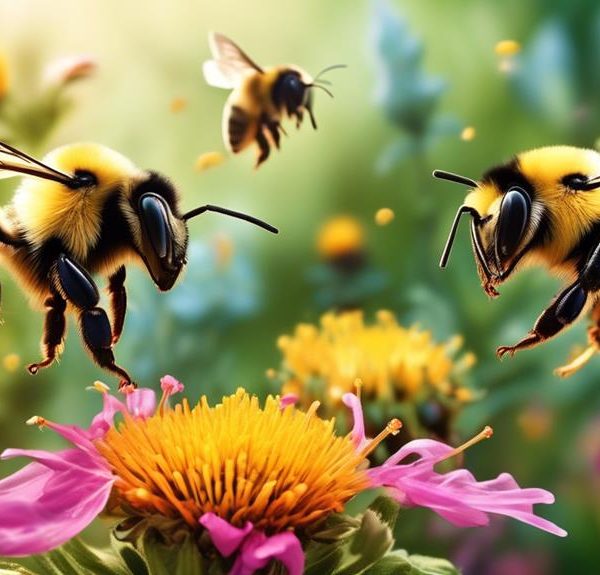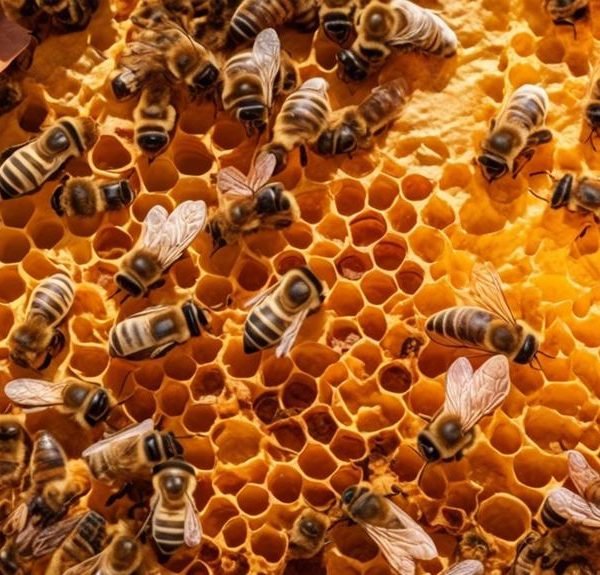Overwhelmed by dead bees in your house? Uncover the surprising factors attracting them and leading to their untimely demise.
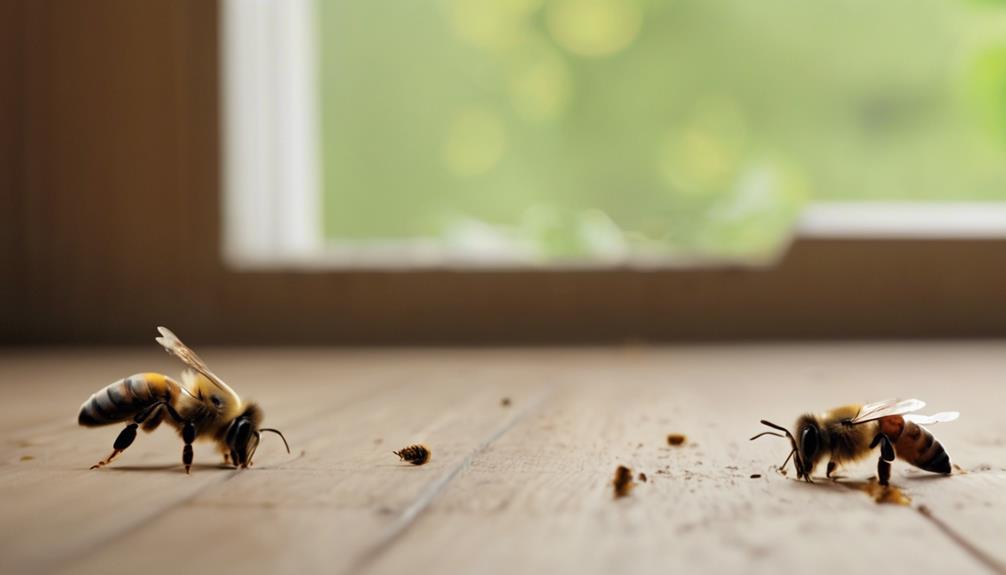
Why Are There Dead Bees in My House?
Have you ever wondered why there are dead bees in your house? It's a curious situation, isn't it? As a homeowner, you're likely puzzled and perhaps a bit concerned.
You've probably asked yourself, 'What's attracting them here, and why are they dying?' Well, there's a variety of factors involved, from the sweet allure of your houseplants to the fatal attraction of your home's lighting.
It seems like a simple problem, yet it's a multifaceted issue that requires a deeper understanding. Now, let's explore the mystery behind these indoor bee fatalities.
Key Takeaways
- Bees are attracted to specific environmental cues such as food sources and flowering plants.
- Common causes of bee mortality include pesticides, diseases, climate change, and habitat loss.
- Pesticides pose a lethal risk to bees, both through direct contact and low-level exposure over time.
- Climate change disrupts bees' breeding cycles, reduces nectar availability, and impacts their ability to regulate body temperature.
Understanding Bee Attractions
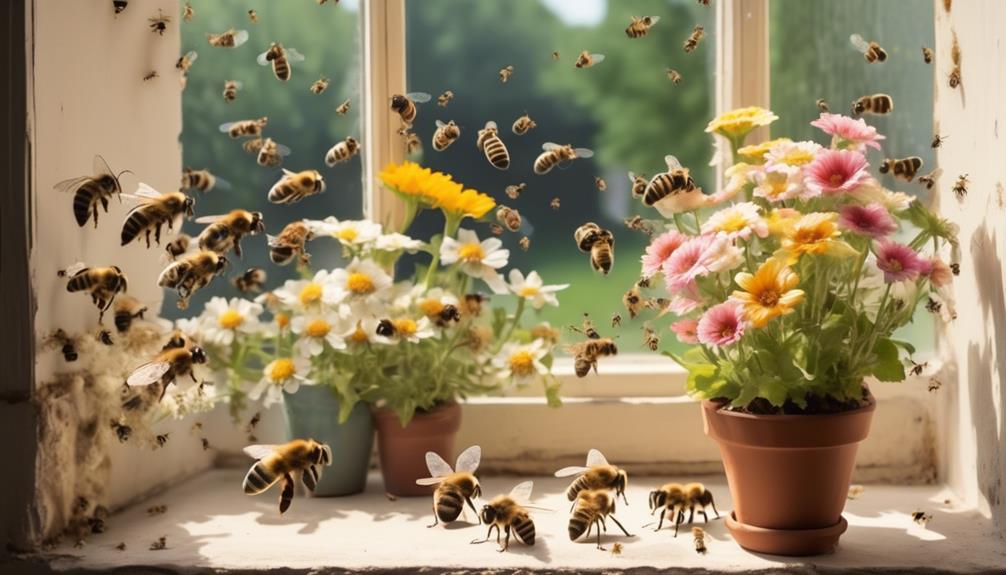
To effectively address the issue of dead bees in your house, it's crucial to understand what attracts bees in the first place. Bees don't just randomly select a home to invade. Instead, they're drawn to specific environmental cues.
One of the key attractions for bees is the presence of food sources. They're foragers, always on the hunt for nectar and pollen, which they find in flowering plants. If your garden is full of blossoming flowers, you've likely created a bee paradise. They're also attracted to sweet foods and beverages, so uncovered sugary substances can be a magnet for these creatures.
Water is another major bee attractant. Bees need water for survival, just like any other living organism. Pools of stagnant water around your home can attract bees, especially in hot weather when water sources are scarce.
Smells can also draw bees into your home. Certain strong scents, particularly floral and sweet ones, can mimic the smell of plants and attract bees. This includes perfumes, air fresheners, and even the scent of certain cleaning products.
Common Causes of Bee Mortality

Understanding what kills bees is as important as knowing what attracts them, especially if you're finding dead bees in your home. Various factors contribute to bee mortality, and it's crucial to grasp them if you're to prevent further bee deaths.
Pesticides are a leading cause of bee deaths. Bees are vulnerable to various chemicals used to kill pests in homes, gardens, and farms. Even low doses can weaken a bee's immune system, leading to death.
Diseases and parasites are another major threat. Varroa mites, for instance, attach themselves to bees, sucking their blood and transmitting deadly viruses. Foulbrood, a bacterial disease, can wipe out entire colonies by killing bee larvae.
Climate change also plays a role. Temperature fluctuations can disrupt bees' breeding cycles, while droughts can reduce the availability of nectar, their primary food source.
Lastly, habitat loss is a significant issue. Urbanization and agriculture often destroy wildflowers and other plants bees rely on for food and nesting.
Bees and Pesticide Exposure

Exposure to pesticides is a grave danger that bees face, significantly impairing their health and often leading to a premature death. As you may be aware, pesticides are commonly used in agriculture and in household gardens to control pests. However, these chemicals don't discriminate, posing a lethal risk not just to pests, but to beneficial insects like bees as well.
When bees come into direct contact with pesticides, they can experience immediate, acute effects – often resulting in death. Even low-level exposure over time can be detrimental. It can lead to chronic health issues, such as impaired navigation, reduced fertility, and weakened immune systems. This makes bees more susceptible to disease and less effective at pollination, negatively impacting entire bee colonies and by extension, our food system.
The use of pesticides isn't just a problem outdoors. Indoor use can also impact bees. You might think your house is a safe haven for these creatures, but if you're using pesticides to control indoor pests, you're creating a toxic environment for bees. That's why you might find dead bees in your house – a poignant reminder of the unintended consequences of pesticide use.
Impact of Climate on Bees
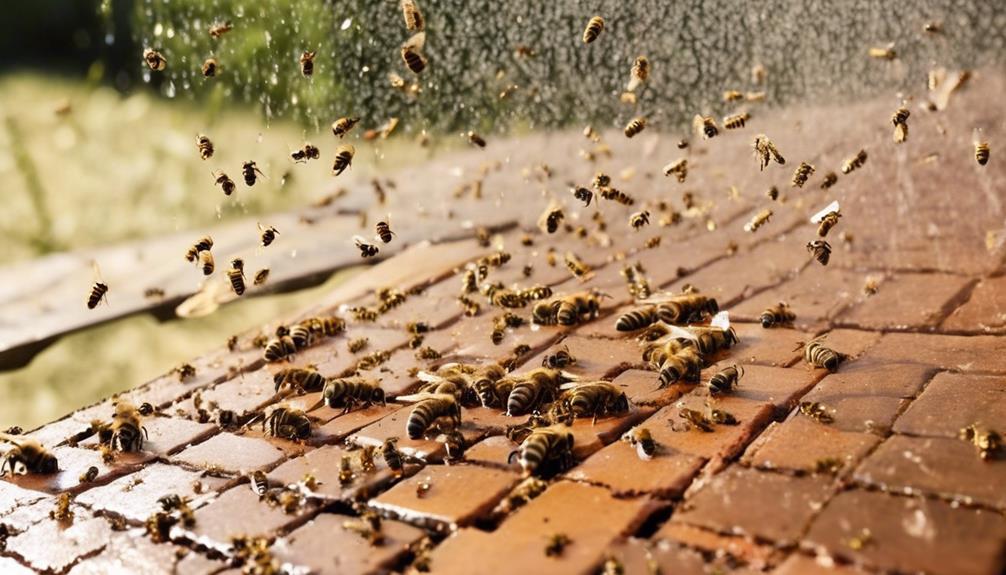
As our planet grapples with climate change, the impact on bees is becoming increasingly noticeable and alarming. Warming temperatures aren't just making you sweat, they're also affecting our buzzing friends. You see, bees are cold-blooded and rely on the environment to regulate their body temperature. Too hot or too cold, and it's lights out for them.
Moreover, climate change disrupts the synchronicity between bees and the blooming of plants. Bees need to gather nectar and pollen when flowers are in full bloom. But if flowers bloom earlier due to warm weather, bees might miss out. This mismatch can lead to poor nutrition, reduced population growth, and ultimately, more dead bees in your house.
Droughts, another consequence of climate change, can also spell disaster for bees. Less rain means fewer flowers, which in turn means fewer food sources for bees. And when bees can't find enough food, they can't sustain their colonies.
It's clear that climate change is another piece of the puzzle explaining why you're finding dead bees. The interplay between climate change and bees is complex, and we're just starting to understand the gravity of it.
Steps to Prevent Indoor Bee Deaths
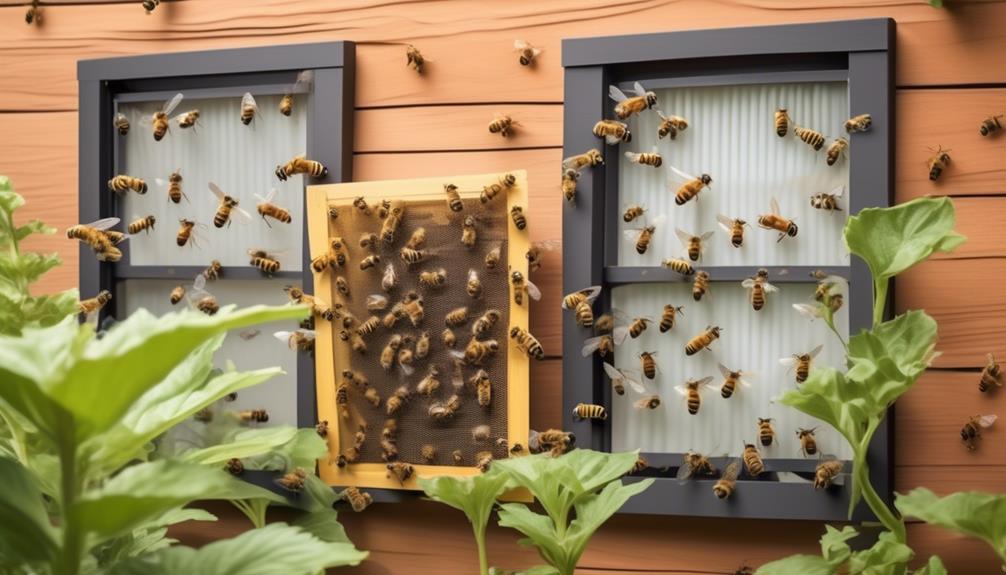
While the impact of climate change on bees is a global concern, there are practical steps you can take in your own home to mitigate the risk of indoor bee deaths.
First off, you should ensure that your dwelling is well-sealed; bees often infiltrate homes through cracks and crevices in walls, windows, or doors. Regular maintenance and repairs can help to keep these critters out.
In addition, you can cultivate a bee-friendly environment outside your home. Plant a garden with native flowers that provide bees with necessary nutrients. This not only supports local bee populations but also discourages them from venturing indoors in search of sustenance. Also, consider reducing your use of pesticides. These chemicals can be lethal to bees. If pest control is required, opt for organic or bee-safe products.
Lastly, if you discover a bee colony in your home, don't resort to extermination. Instead, contact a local beekeeper or pest control company that offers live bee removal services. This step is crucial in preserving these beneficial insects and reducing unnecessary bee deaths. Remember, every little action counts when it comes to protecting our vital pollinators.
Frequently Asked Questions
What Diseases Can I Contract From Dead Bees in My House?
You're unlikely to contract diseases from dead bees in your house. Bees aren't known to transmit diseases to humans. However, if you're allergic, a bee's sting can cause reactions.
Dead bees can attract pests like ants or mice, which can carry diseases. It's best to remove dead bees promptly and figure out why they're appearing in your home.
There's always a chance, albeit small, of bacteria on the bee's body causing an infection if it's ingested or enters through a wound.
What Are the Types of Bees That Could Potentially Invade My Home?
You're likely dealing with common house-invading bees such as honey bees, bumble bees, or carpenter bees. Honey bees often seek shelter in chimneys or walls.
Bumble bees might nest in your yard and accidentally venture inside.
Carpenter bees burrow into wood, potentially damaging your home.
It's important to identify the type, as removal methods vary.
However, don't panic—bees aren't typically aggressive unless threatened.
Can Dead Bees Attract Other Types of Pests Into My Home?
Yes, dead bees can indeed attract other pests into your home. Pests such as ants, cockroaches, and certain types of flies are attracted to the scent of deceased bees. They're always on the lookout for easy meals, and a dead bee provides just that.
How Can I Safely Remove Dead Bees From My House Without Getting Stung?
You can safely remove dead bees without getting stung by using a vacuum cleaner with a long hose. Always wear protective clothing, such as gloves and long sleeves.
After vacuuming, seal and dispose of the bag immediately. If there's a large number, consider hiring a professional pest control service.
Are There Any Specific Regions or Climates Where Indoor Bee Deaths Are More Common?
You're likely to see more indoor bee deaths in regions with harsh winters. Bees sometimes enter homes seeking warmth, but they can't survive long inside.
In warmer climates, bees are more active year-round, so you may find dead bees if they've set up a hive in your house.
In any region, bee deaths can be more common if there are pesticides or other harmful substances in your home.
Conclusion
So, you've found dead bees in your house and you're wondering why.
Likely culprits include attractions like indoor plants or open containers, exposure to pesticides, or drastic climate changes.
It's crucial to take steps like sealing entrances and avoiding harsh chemicals to prevent such occurrences.
Understanding these factors allows you to create a safer environment for both you and the bees, contributing to a healthier ecosystem overall.

